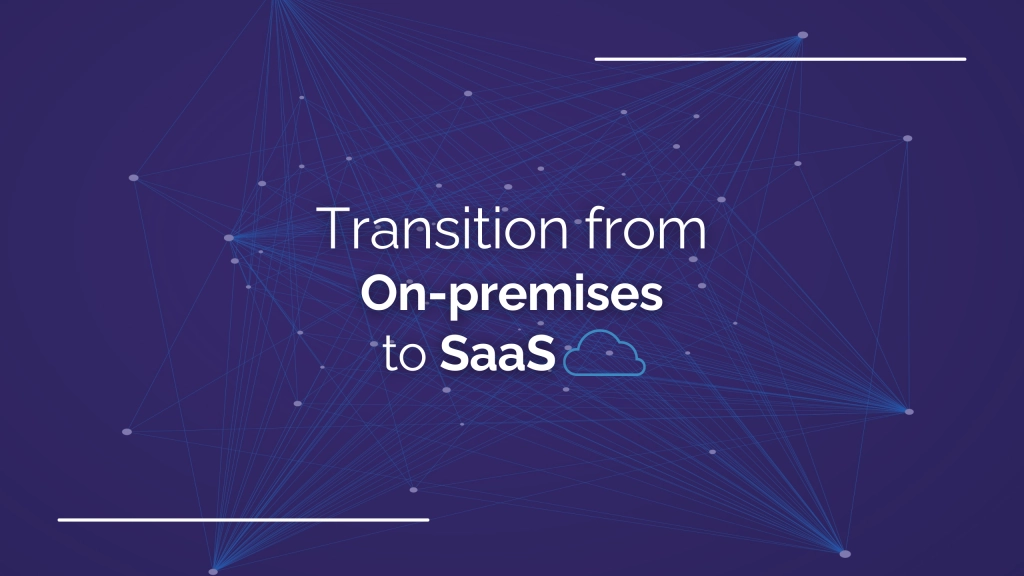Mistakes when Transitioning from On-Premises to SaaS ERP
Transitioning from on-premises ERP to the cloud is a challenge that many businesses face in their transformative journey. SMBs often do not have the IT resources and expertise to deal with these challenges on their own. If you are going through this in your plan for upgrading to Business Central SaaS, you are not alone. These are the three main mistakes that users make when taking the step to migrate to the cloud:
1. Underestimating the complexity of the migration process
Transitioning to Business Central is a complex migration process and it should not be underestimated, which means that businesses should consider choosing an experienced implementation partner who will make the migration as seamless as possible. When migrating, it is important to evaluate your existing infrastructure and identify the specifications of the company. The objectives of the company should be clearly defined – cost reduction, scalability, improved performance, etc. Moreover, it is important to also assess the readiness of the organization which includes the technical, financial and operational aspects.
Risk management is another important step in the migration process. Identifying potential risks is a key part of making the transition as seamless as possible during the next steps. This is why creating a risk mitigation plan is also a crucial step: creating strategies to address and deal with any identified risks. As the transition from on-premises software to a cloud-based SaaS model involves data migration, the configuration, customizations and additional integrations should be completed with minimal damage and disruption to the business operations.
Your trusted ERP partner should create a detailed migration plan that outlines the potential risks, the timeline for completing the transition and the resource requirements. Furthermore, effective communication and collaboration between your employees and the consultants is key for the project success, as this will ensure a thorough oversight of each phase in the migration process. The two teams work together to make the migration process seamless and ensure that everything falls into place perfectly.
2. Neglecting customization and integrations
Customizations and add-ons play a vital role as they tailor the solution to the client's specific business needs. However, these additionally developed functionalities should not be overlooked as they may create difficulties in the migration process – for example, compatibility issues or performance limitations. In some cases, it may be necessary to make changes to the customizations to align with the capabilities of Business Central SaaS.
A carefully executed migration plan begins with an Analysis phase which is crucial for identifying the potential project risks, especially the more demanding aspects. This ensures that, during the process of migration, users know what to expect and can prioritize critical customizations that require more effort to adapt.
3. Lack of proper training and support
Many on-premises users who have not upgraded their system in years have become used to the same functionalities. On the other side, Business Central SaaS offers a wide variety of new functionalities that offer a next-level boost of efficiency and productivity. As employees will face a new way of doing their daily work tasks, they will need more time to adapt to the upgraded system and functionalities. However, this process is impossible without proper training and support provided by the implementation partner. As mentioned before, communication across various channels and consistent practise are key – the work of the customer and the vendor must go hand in hand.

If you are still relying on outdated on-premises systems, you may be losing your opportunity to grow beyond your limits. The SaaS cloud-based model has turned into the ultimate scalable, accessible, modern and highly secure solution preferred by many organizations of all sizes. Without surprise, the cloud is replacing the on-premises model with great speed. Microsoft products are no exception – users are migrating to Business Central ERP SaaS and unravelling the power of the cloud and the exclusive functionalities available.
Considering your cloud migration? No need to delay the decision anymore.
Contact us for a consultation – our team works extensively to make this process as smooth as possible by analysing all the potential pitfalls and preparing a suitable migration plan for your business specifications. Now, you can take advantage of the Bridge to the Cloud promotional offer which guarantees 3 years of 40% discount on Dynamics 365 cloud product licenses.
Source:
3 common mistakes when transitioning from Dynamics NAV to Business Central SaaS
4 reasons why businesses should switch from on-premises to Software as a Service







